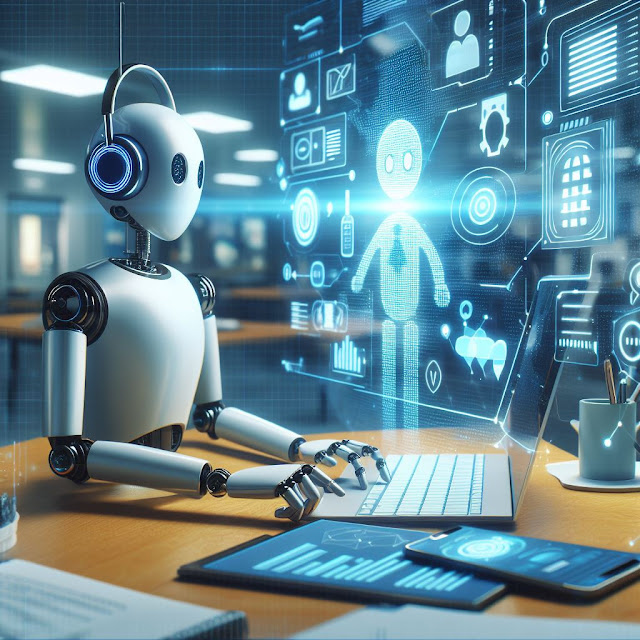Introduction
In the ever-evolving landscape of technology, the rise of no-code tools has been nothing short of revolutionary. These platforms have ushered in a new era, allowing tech enthusiasts to unleash their creativity without the need for extensive coding knowledge. In this article, we delve into the evolution of no-code tools, focusing on their impact on design and content creation, specifically targeting tech-related individuals who seek innovative solutions for their creative endeavors.
Evolution of No-Code in Design
The emergence of no-code design tools marks a paradigm shift from traditional coding to a more accessible and creative approach. Visual development platforms have gained popularity, enabling designers to bring their visions to life without diving into complex code structures. This evolution speaks to the growing demand for creative freedom in the tech community.
No-code tools break design barriers by offering graphic design capabilities without the need for programming expertise. Designers can now create visually stunning graphics, interfaces, and layouts using intuitive drag-and-drop features. This not only simplifies the design process but also opens up new possibilities for those who may have felt restricted by coding constraints.
Content Creation Revolution
No-code tools have significantly impacted content creation by providing a platform where individuals can craft engaging content without delving into coding intricacies. With features like drag-and-drop design tools, content creators can focus on their ideas without being bogged down by technicalities. This shift has democratized the content creation process, allowing a wider range of individuals to participate and share their unique perspectives.
The empowerment of creativity extends to UX/UI design, where no-code solutions streamline design workflows. Designers can iterate rapidly, experimenting with various elements to enhance user experiences. Rapid prototyping, facilitated by no-code platforms, has become a game-changer, enabling designers to test ideas and make improvements on the fly.
No-Code Platforms in Action
No-code platforms come in various forms, each tailored to specific design and content creation needs. These platforms allow users to create applications without writing a single line of code, making app development accessible to a broader audience. Examples of successful applications built with no-code tools showcase the potential and versatility of these platforms.
Case studies highlight success stories in design and content creation, illustrating how no-code solutions have enabled individuals and businesses to innovate and stay ahead of the curve. These examples serve as inspiration for tech enthusiasts looking to explore the creative possibilities offered by no-code tools.
Advantages and Benefits
The advantages of no-code tools in design and content creation are numerous. One of the most significant benefits is the increased efficiency in design workflows. Design automation tools reduce repetitive tasks, allowing designers to focus on the creative aspects of their work. Streamlined design workflows result in quicker turnarounds and more dynamic creative processes.
Creative freedom is at the core of no-code solutions. Designers and content creators are no longer bound by the limitations of code, giving them the flexibility to experiment with ideas and push creative boundaries. This newfound freedom fosters a culture of innovation and exploration, driving the evolution of design and content creation.
Time and cost savings are additional perks of adopting no-code tools. Rapid prototyping with no code significantly shortens the development cycle, allowing for quick iterations and improvements. The elimination of extensive coding also reduces development costs, making creative projects more accessible to a wider audience.
Future Trends and Innovations
The future landscape of no-code in design holds exciting possibilities. As technology continues to advance, we anticipate further innovations in content creation without coding. Visual development platforms are likely to become more sophisticated, providing even more tools for designers and content creators to express their ideas seamlessly.
Anticipated developments include enhanced features in content creation, such as AI-driven design suggestions and collaboration tools. These advancements will further empower creative professionals to bring their visions to life, pushing the boundaries of what is possible without a deep understanding of coding languages.
Challenges and Considerations
While the rise of no-code tools brings forth numerous benefits, it's essential to address potential challenges. No-code for creative professionals may raise concerns about standardization and the balance between creativity and uniformity. Design automation tools, while streamlining workflows, should be implemented judiciously to maintain the uniqueness of creative outputs.
Balancing the freedom of expression with standardized design practices is a consideration for designers using no-code solutions. Striking the right balance ensures that creativity flourishes without compromising the user experience or design integrity.
Conclusion
In conclusion, the rise of no-code tools has ushered in a new era of creativity in design and content creation within the tech community. The evolution from coding to intuitive platforms has empowered individuals to unleash their creative potential without the barriers of complex programming. As we look to the future, the continued development of no-code tools promises even greater possibilities for innovation and expression in the digital realm. It's time for tech enthusiasts to embrace these tools and shape the future of design and content creation with newfound freedom and efficiency.



Comments
Post a Comment